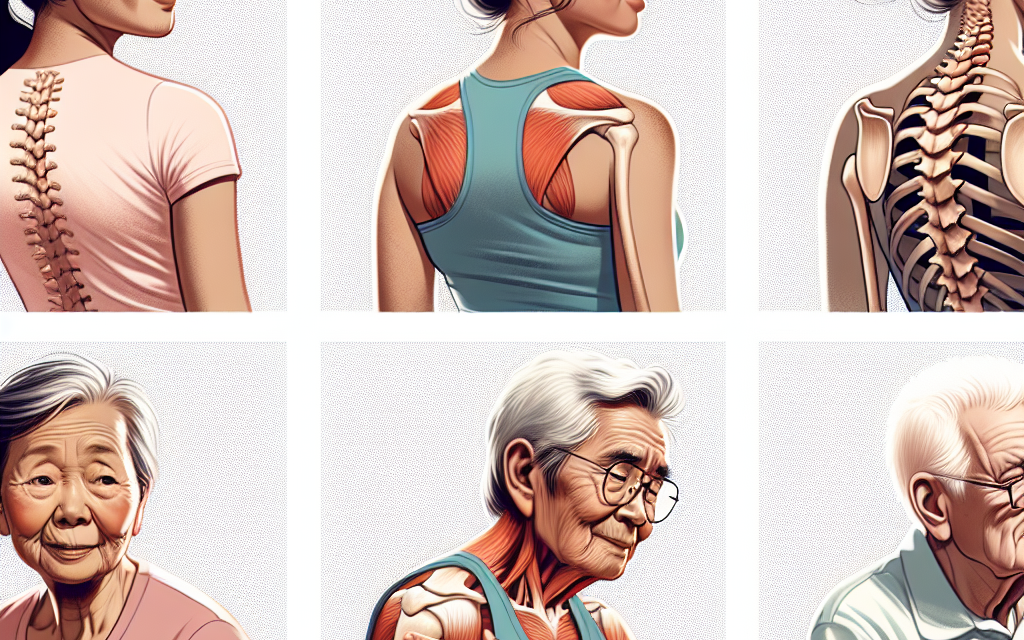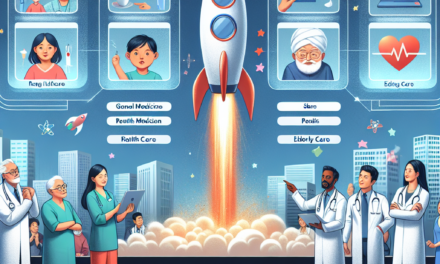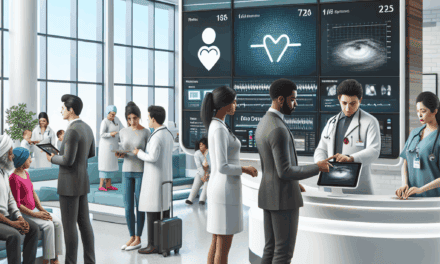The Effects of Aging on Your Back Through the Years
Aging is an inevitable process that affects every aspect of our bodies, including our musculoskeletal system. One of the most commonly affected areas is the back, which can experience a range of changes as we grow older. Understanding these changes is crucial for maintaining back health and overall well-being. This article delves into the effects of aging on the back, exploring the anatomical changes, common conditions, preventive measures, treatment options, and lifestyle adjustments that can help mitigate back issues as we age.
Anatomical Changes in the Spine with Age
The spine is a complex structure composed of vertebrae, intervertebral discs, ligaments, and muscles. As we age, various anatomical changes occur that can impact back health. These changes can lead to discomfort, pain, and reduced mobility.
1. Degeneration of Intervertebral Discs
Intervertebral discs act as shock absorbers between the vertebrae. With age, these discs undergo degenerative changes, including:
- Dehydration: Discs lose hydration, leading to reduced height and flexibility.
- Wear and Tear: The outer layer of the disc can develop tears, making them less effective at absorbing shock.
- Herniation: Degeneration can lead to herniated discs, where the inner gel-like substance protrudes through the outer layer, potentially pressing on spinal nerves.
Research indicates that by the age of 60, nearly 90% of individuals show some degree of disc degeneration. This degeneration can lead to chronic pain and reduced mobility, significantly impacting quality of life.
2. Changes in Vertebral Structure
As we age, the vertebrae themselves can undergo structural changes:
- Bone Density Loss: Osteoporosis, a condition characterized by decreased bone density, can lead to vertebral fractures.
- Spinal Stenosis: The spinal canal can narrow due to bone spurs and thickened ligaments, leading to pressure on the spinal cord and nerves.
- Kyphosis: Age-related changes can lead to a forward curvature of the spine, commonly known as a hunchback, which can affect posture and balance.
These structural changes can lead to significant discomfort and mobility issues, making it essential to monitor spinal health as we age.
3. Muscle Weakness and Imbalance
Muscle strength and balance are crucial for maintaining a healthy back. Aging can lead to:
- Muscle Atrophy: Sarcopenia, or age-related muscle loss, can weaken the muscles that support the spine.
- Imbalance: Weakness in core muscles can lead to poor posture and increased strain on the back.
- Reduced Flexibility: Aging can lead to decreased flexibility in muscles and ligaments, further contributing to back pain.
Studies show that older adults are at a higher risk of falls due to muscle weakness and balance issues, which can lead to serious injuries, including fractures and spinal injuries.
Common Back Conditions Associated with Aging
As the spine undergoes changes with age, several common conditions can arise, leading to pain and discomfort. Understanding these conditions is vital for early detection and treatment.
1. Osteoarthritis
Osteoarthritis is a degenerative joint disease that commonly affects the spine. It occurs when the cartilage that cushions the joints wears down over time, leading to:
- Pain: Affected joints can become painful, especially during movement.
- Stiffness: Morning stiffness or stiffness after prolonged sitting can be common.
- Swelling: Inflammation can occur around the affected joints.
According to the Arthritis Foundation, osteoarthritis affects approximately 27 million adults in the United States, with the spine being a common site of involvement. Treatment options include physical therapy, medications, and in severe cases, surgery.
2. Herniated Discs
A herniated disc occurs when the inner gel-like material of the disc protrudes through the outer layer. This condition can lead to:
- Radiculopathy: Nerve root compression can cause pain, numbness, or weakness in the arms or legs.
- Chronic Pain: Persistent pain in the lower back or neck can significantly impact daily activities.
- Loss of Mobility: Severe cases can lead to difficulty in movement and reduced quality of life.
Herniated discs are more common in individuals aged 30 to 50, but they can occur at any age. Treatment often involves conservative measures such as physical therapy, pain management, and lifestyle modifications.
3. Spinal Stenosis
Spinal stenosis is a narrowing of the spinal canal that can compress the spinal cord and nerves. Symptoms may include:
- Pain: Pain in the lower back, buttocks, or legs, especially when standing or walking.
- Numbness: Tingling or numbness in the extremities.
- Weakness: Muscle weakness can occur, affecting mobility.
Spinal stenosis is often caused by age-related changes such as arthritis and disc degeneration. Treatment options range from physical therapy to surgical interventions, depending on the severity of symptoms.
Preventive Measures for Back Health
While aging can lead to various back issues, there are several preventive measures that individuals can take to maintain back health and reduce the risk of pain and injury.
1. Regular Exercise
Engaging in regular physical activity is one of the most effective ways to maintain back health. Exercise can help:
- Strengthen Muscles: Targeted exercises can strengthen the core and back muscles, providing better support for the spine.
- Improve Flexibility: Stretching exercises can enhance flexibility, reducing the risk of injury.
- Maintain Healthy Weight: Regular exercise helps manage weight, reducing strain on the back.
Activities such as swimming, walking, and yoga are particularly beneficial for older adults, as they are low-impact and promote overall well-being.
2. Ergonomic Adjustments
Making ergonomic adjustments in daily life can significantly reduce back strain. Consider the following:
- Workstation Setup: Ensure that your desk and chair are at appropriate heights to promote good posture.
- Proper Lifting Techniques: Use your legs to lift heavy objects rather than bending at the waist.
- Supportive Footwear: Wear shoes that provide adequate support to reduce strain on the back.
Implementing these adjustments can help prevent back pain and promote better posture throughout the day.
3. Nutrition and Hydration
A balanced diet and proper hydration play a crucial role in maintaining back health. Key considerations include:
- Calcium and Vitamin D: These nutrients are essential for bone health. Include dairy products, leafy greens, and fortified foods in your diet.
- Anti-Inflammatory Foods: Incorporate foods rich in omega-3 fatty acids, such as fish, nuts, and seeds, to reduce inflammation.
- Hydration: Staying hydrated helps maintain the elasticity of intervertebral discs.
Proper nutrition can support overall health and help mitigate age-related changes in the spine.
Treatment Options for Back Pain
When back pain does occur, various treatment options are available to alleviate symptoms and improve quality of life. Understanding these options can empower individuals to seek appropriate care.
1. Physical Therapy
Physical therapy is often a first-line treatment for back pain. A physical therapist can develop a personalized program that includes:
- Strengthening Exercises: Targeted exercises to strengthen the back and core muscles.
- Stretching Techniques: Stretching to improve flexibility and reduce tension.
- Posture Training: Education on proper posture and body mechanics to prevent future injuries.
Research shows that physical therapy can be highly effective in managing chronic back pain and improving function.
2. Medications
Medications can help manage pain and inflammation associated with back conditions. Common options include:
- Nonsteroidal Anti-Inflammatory Drugs (NSAIDs): Over-the-counter options like ibuprofen can reduce pain and inflammation.
- Muscle Relaxants: These can help alleviate muscle spasms that may accompany back pain.
- Prescription Medications: In severe cases, stronger medications may be prescribed by a healthcare provider.
It is essential to use medications under the guidance of a healthcare professional to avoid potential side effects and complications.
3. Surgical Interventions
In cases where conservative treatments fail to provide relief, surgical options may be considered. Common surgical procedures include:
- Laminectomy: Removal of a portion of the vertebra to relieve pressure on the spinal cord or nerves.
- Discectomy: Removal of a herniated disc to alleviate nerve compression.
- Spinal Fusion: Joining two or more vertebrae to stabilize the spine.
Surgery is typically considered a last resort and is reserved for cases with severe symptoms or significant impairment.
Lifestyle Adjustments for Long-Term Back Health
In addition to preventive measures and treatment options, making lifestyle adjustments can significantly impact back health over the long term. These adjustments can help individuals maintain a healthy spine as they age.
1. Mindfulness and Stress Management
Chronic stress can contribute to muscle tension and exacerbate back pain. Incorporating mindfulness practices can help:
- Meditation: Regular meditation can promote relaxation and reduce stress levels.
- Deep Breathing Exercises: These can help alleviate tension in the back muscles.
- Yoga: Yoga combines physical activity with mindfulness, promoting flexibility and relaxation.
Research indicates that mindfulness practices can lead to significant reductions in chronic pain and improved overall well-being.
2. Regular Health Check-Ups
Regular check-ups with healthcare providers can help monitor spinal health and detect potential issues early. Key considerations include:
- Bone Density Testing: For individuals at risk of osteoporosis, regular bone density tests can help assess bone health.
- Spinal Assessments: Regular assessments can help identify changes in posture or spinal alignment.
- Screening for Conditions: Early detection of conditions such as arthritis or herniated discs can lead to more effective treatment.
Proactive healthcare can play a crucial role in maintaining back health as we age.
3. Social Engagement and Support
Maintaining social connections and engaging in community activities can have positive effects on mental and physical health. Consider the following:
- Group Exercise Classes: Participating in group classes can provide motivation and support for maintaining an active lifestyle.
- Support Groups: Connecting with others who experience similar back issues can provide emotional support and practical advice.
- Community Activities: Engaging in social activities can promote mental well-being and reduce feelings of isolation.
Social engagement is essential for overall health and can contribute to better management of back pain.
Conclusion
Aging inevitably brings changes to our bodies, including our backs. Understanding the effects of aging on spinal health is crucial for maintaining mobility and quality of life. By recognizing the anatomical changes, common conditions, preventive measures, treatment options, and lifestyle adjustments, individuals can take proactive steps to protect their backs as they age.
Regular exercise, ergonomic adjustments, proper nutrition, and stress management are all vital components of a comprehensive approach to back health. Additionally, seeking timely medical care and engaging in social activities can further enhance well-being.
Ultimately, while aging may present challenges for back health, informed choices and proactive measures can help individuals navigate these changes and maintain a healthy, active lifestyle well into their later years.





